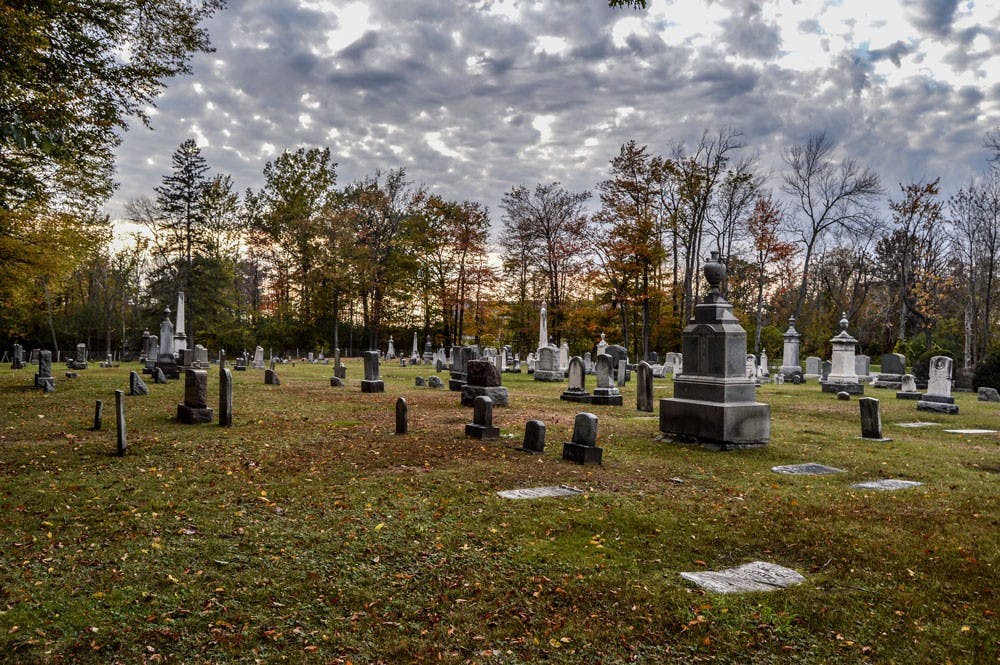Most students know very little about the small and relatively isolated cemetery that sits right on the border of North Campus.
But Skinnersville Cemetery, located on Frontier Road near Lake LaSalle, contains the remains of those who have donated their bodies to help the university further its research and teaching efforts.
As a part of the Anatomical Gift Program, UB purchased grave plots for the remains of donors that gave their deceased bodies to the Jacobs School of Medicine and Biomedical Sciences for anatomical studies. The donor or his or her family members decide whether or not the body will be buried in Skinnersville Cemetery, according to the Anatomical Gift Program website.
Some of the cemetery’s earliest graves are in memory of many generations of Buffalo families. The headstones also read the names of World War II veterans.
Linda Keoth, a North Tonawanda resident, visited her sister’s grave at Skinnersville on Monday. Her sister was a donor to the program in 2011 and was laid at the cemetery at her own request.
“At first I couldn’t go to the service and all, because it was too much for me,” Keoth said. “But visiting here today, it’s nice and peaceful. I think it’s a beautiful place for her to rest.”
Students have varied opinions about the cemetery, from curiosity to slight fear.
“I mean I would walk by if I had to, just not alone at night,” said Amie Dukuray, a junior health and human services major.
Dukuray first heard about the cemetery in her anatomy class when her professor told the class it is where the donated bodies are put.
“It’s so close to campus that you really think about it,” Dukuray said.
If donors do chose to have their bodies laid to rest in Skinnersville, they receive a plot at the cemetery for their cremated remains. Newman Chapel, the small church right across the road from the cemetery, is a non-denominational Christian church where ceremonies are held.
As a part of the ceremonies, campus ministries, faculty and students share their gratitude with the families of the donors and speak on the behalf of UB and the program. UB Campus Ministry give thanks and then celebrates with the families.
The cemetery remains open to the public for families to visit the plots after the funerals. For Keoth, her first visit to her sister’s grave was peaceful for her.
“I really liked how much her wishes were treated with respect,” she said.
The bodies are used to teach medical and dental students as well as for research programs. Some bodies are shared with other schools that need anatomical material, according to the website.
At the end of the fall semester gross anatomy course, students from the medical and dental schools hold a service for the donors. Students write songs, poems and prose to express their gratitude for the donations.
To become a donor in the Anatomical Gift Program, one must complete a Declaration of Consent and Emergency Contact Information form.
“I do think it’s creepy and it scares me a little,” said Asahi Nakamigawa, a senior communications major. “It is kind of interesting.”
Linnea Cremean, a freshman undecided major, said she the cemetery doesn’t bother her at all.
“I live off campus, so I haven’t really heard of it or seen it,” Cremean said. “I’d be interested to see who’s there.”
Thanya Theogene is a staff writer and can be reached at news@ubspectrum.com





